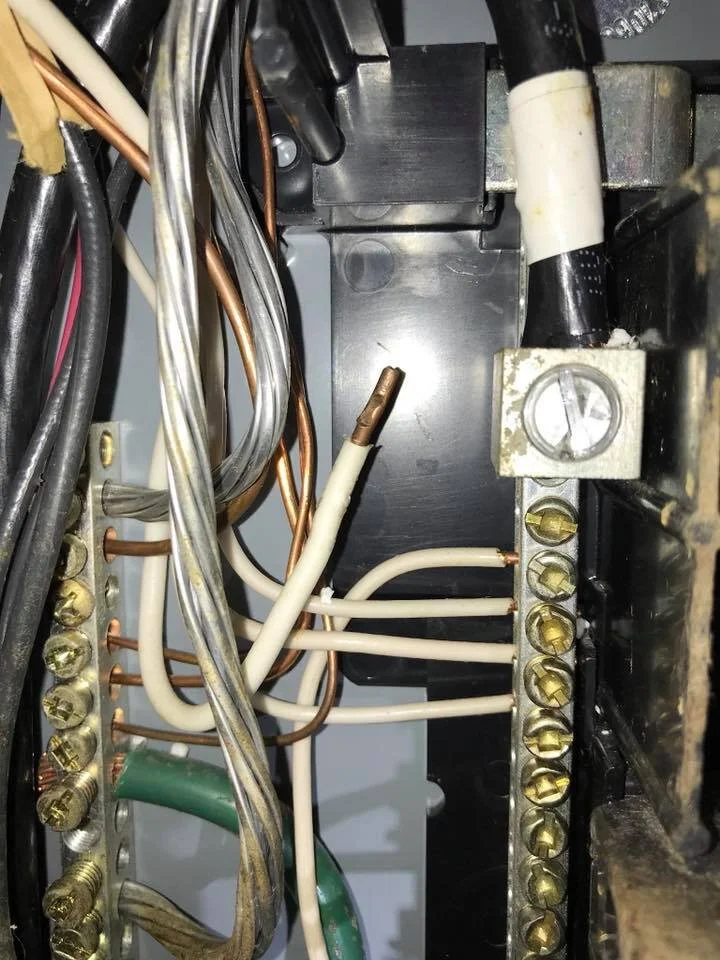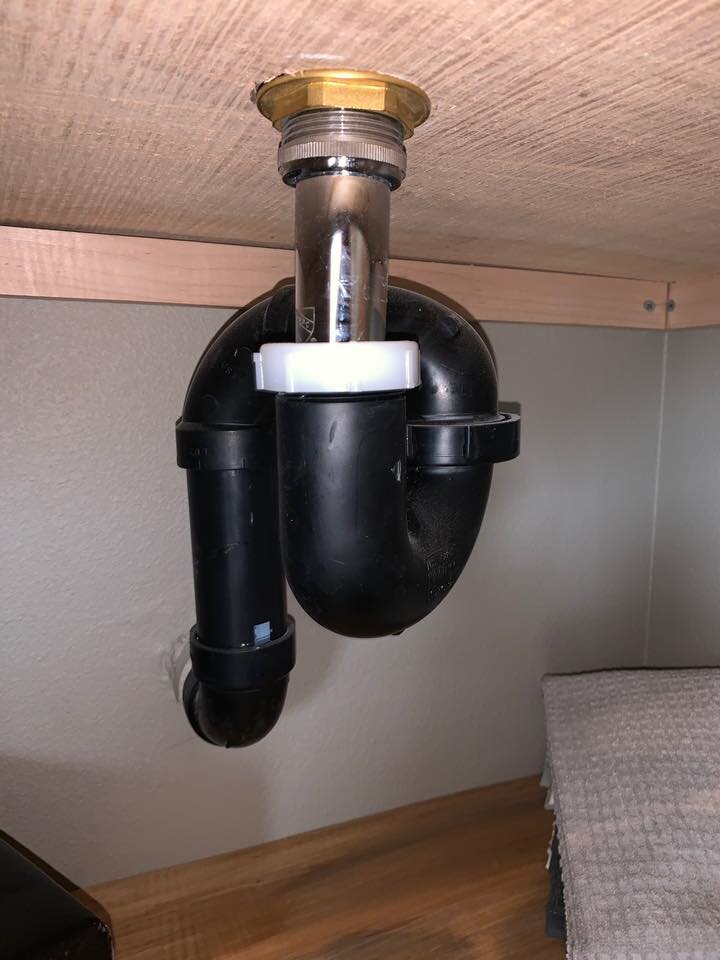Exhaust Vent Defects found during Home Inspections
These are bathroom exhaust vents that are exhausting to the attic. This is common for houses from 60’s to 90’s. These vents should be routed to the exterior via a roof vent. This will prevent the exhaust vent from expelling hot moist air into the attic, which can lead to condensation and mildew buildup. Recommend repair.
This is a kitchen exhaust vent. The vent material is flexible rigid material, this is improper material. This kind of material is conducive for catching grease buildup and becoming a possible fire hazard. The ductwork for the exhaust system needs to be smooth and have as few bends as possible and should be made from galvanized steel, copper or stainless steel. The ducts need to be mechanically fastened and sealed with tape or mastic. If tape is used, it should be metal-backed and not conventional cloth-backed duct tape, which can dry out and crumble.
This is a bathroom exhaust vent. This is improper material. The one in the picture is for dryer exhaust from appliance to the wall connection. It’s made of foil paper and can easily be damaged in the attic, creating unwanted hot moist air expelling to the attic. Plus it’s recommended that these be insulated to prevent heat buildup and condensation in the attic. Recommend repair.
Check this one out, this is my favorite. It’s the kitchen and bathroom exhaust vents venting into the main sewer plumbing vent. This is a possible safety hazard. Sewer gases are flammable and the exhaust vent could be a source of ignition. Recommend repair by licensed contractor.
Electrical Defects Found During a Home Inspection
This electrical panel has double tapped branch wires. This is a safety hazard, for this reason. It can cause arching, which can cause heat and fire hazards. Recommend licensed electrician re-evaluate/repair as needed.
This electrical panel had 2 AFCI (arc fault circuit interrupter) breakers. One wasn’t functioning properly. These are designed to prevent arcing which can cause fires. Recommend licensed contractor repair.
#homeinspector
#detailshomeinspections
This is a loose wire in an electrical panel, safety hazard. It should be capped/taped to prevent a shock hazard. If this touched the panel it would make the panel energized.
This is a photo that shows a damaged breaker pole. The panel label states that it requires 2 pole breakers in the service section. Its required to have 6 or less hand movements to shut off the main service disconnect area in an electrical panel. Recommend repair
Dryer Ducts and Common Defects with a Home Inspection
Dryer duct in the attic. Appears clogged and in need of cleaning. If left unattended this can have possible fire issues. #homeinspector #detailshomeinspections
This is a disconnected dryer duct in a crawlspace. Look at all the lint. This is a common issue. It also, creates adding hot moist air to the crawlspace which leads to ventilation issues. Recommend repair.
Clogged/dirty ducts with covers. This screen should be removed to allow proper ventilation. The duct cover has flaps that are designed for dryer ducts. This is a fire hazard. I wonder how much lint is jammed in this dryer duct.
Check us out on Facebook or contact us to book a home inspection in Vancouver and surrounding areas.
Sewer Scopes and Why they are Needed
This is a sewer scope on a new build. My Dads actually, lucky for him he knows a home inspector. This spike/nail was about 60 feet down the line. You can see it already holding debris on a new build that hasn’t been lived in. This will cause major problems. It was in the street and will cost some big bucks to fix. People always ask me if they should get a sewer scope on a new builds, the answer is YES!
Did a sewer scope on a new build and look at what was in the line just after the new line. Looks like construction debris. I recommend getting sewer scopes done on new builds for this very reason.
Other common issues we see doing sewer scopes are roots in the line causing backups. Pipes that are disconnected at the joints, called an offset. Bellies which are areas that are lower than the main line. They usually are holding water and debris. Many other defects can be found and its generally a costly fix. Contact us to schedule a sewer scope with your home inspection.
Common Plumbing Defects Found During a Home Inspection
This is called an “S Trap” it was used in the past, but no longer. The trap will dry out if not used frequently and you will smell grey water gases(wastewater). Recommend licensed plumber repair.
#homeinspector
#detailshomeinspections
Here’s a clogged dishwasher airgap. You can see that when it drains it shoots out into the sink and countertop. Recommend repair.
Here’s some disconnected plumbing straps in a crawlspace. This is a common issue. You can see that it puts extra stress on the plumbing joints. This one so much that it was leaking. The first photo has the leak on the under side of the pipe.
Here’s a plumbing vent that’s venting to the attic. It should be routed through the roof. It’s used to exhaust off gases from the drain waste lines. Recommend repair.

















